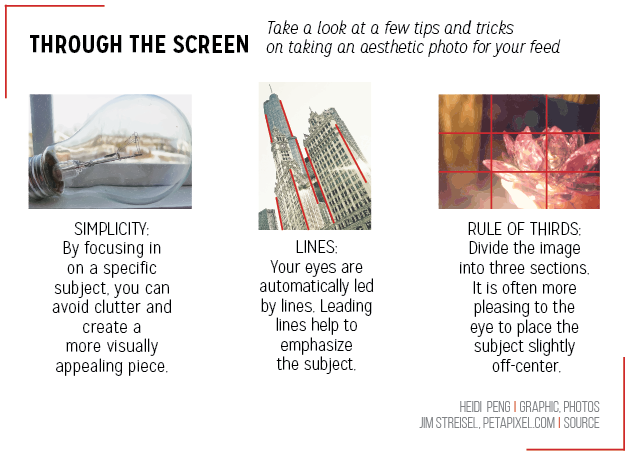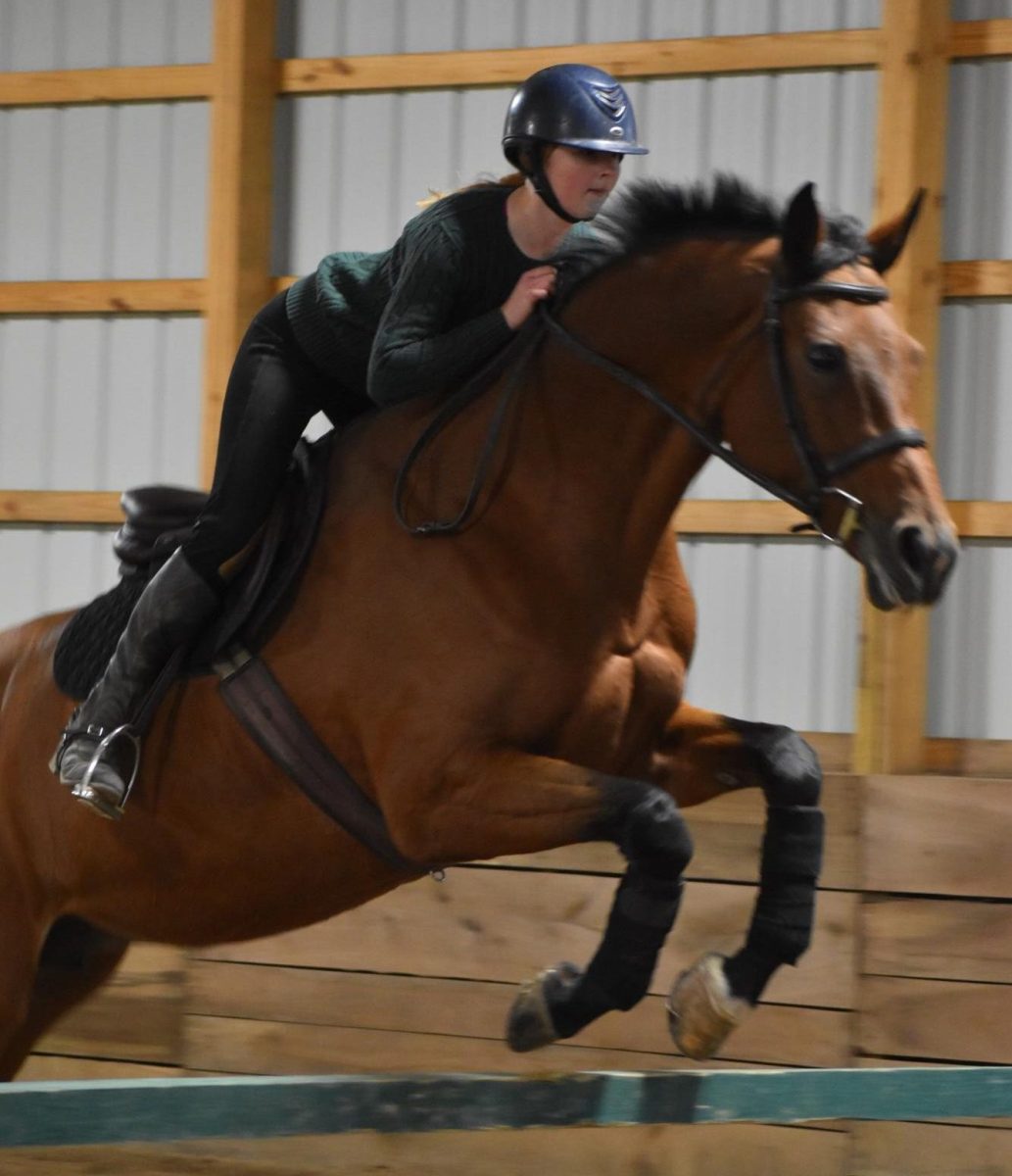For sophomore Reagan Smiley, she said she has been in love with photography for her whole life.
“I’ve been doing a photography for a pretty long time. I think I had my first camera when I was eight,” she said.
If anything, Smiley’s passion is indicative of a greater worldwide trend. According to a 2017 article published by the New York Times, approximately 1.3 trillion photos will be taken this year. Now, more than ever, the world is becoming increasingly invested in pictures.
However, a 2014 Fairfield University study found a trend that they dubbed the “photo-taking impairment effect,” which showcased that when taking pictures, the brain relies on the camera to record memories instead of itself. In other words, subjects didn’t remember the moment as well.
Smiley says she disagrees with the severity of the study.
“I think pictures are only bad if we take too much of them and are absorbed by them. Not all pictures are bad,” Smiley said. “For me, I strive to have a meaning behind the photo. You don’t just want to snap a photo and go. You want to be able to have a meaning or theme behind the photo so people can think about the photography and not just think, ‘Oh, that’s a cool photo.’ You want the person that’s viewing the photo to think about what it’s saying. You want to evoke a response with the photo.”
Fortunately, for people like Smiley who are avid photographers, a 2016 study published by Alix Barasch, an assistant professor at New York University Stern School of Business, challenges the idea that photos take people out of the moment. The study suggests photos actually draw people in, allowing people to remember even more about the experience.
As shown by the conflicting studies, there has not been enough research done on this issue for an accurate conclusion; thus, the debate rages on.
Photography teacher Kevin Daly says he can see both sides of the argument.
“My wife and I have this conversation all the time when we go on vacation. She always says, ‘You’re the worst photographer’ because I’m always like ‘I don’t really care to take the picture. I’m on vacation; I’d rather just be here,’” he said. “ However, there are many images that my wife and I have framed that we share with people she talks to, “Weren’t you glad that we took the picture?” and I’m like ‘Yeah, you were right.’ So I see it both ways.”
For Seong-Hyeon “Sam” Kim, a regular social media user and junior, this new study changes the way he views the camera on his phone.
“I have definitely been told to stop using my camera before,” Kim said. “When I was at the Riley Dance Marathon, I think I was on my phone too much. I was trying to get the right candid picture, and people were like, ‘Dude, stop.’”
Regardless of the debate, Daly said photography was still immensely enjoyable for him.
“The time we spent at this one waterfall was quadrupled because I was photographing (it). If I didn’t have a camera, I probably would’ve got bored with it. Even though it’s beautiful, I probably would’ve gotten bored within a half hour, (I would have said,) ‘Let’s drive onto the next one.’ But we ended (up) spending 3 hours there,” Daly said. “Now that I think about it, the waterfalls that I remember the most were the ones where I was taking pictures.”
Smiley, however, still warns against excessive camera usage during special moments.
She said, “Once I get into (the camera), it can consume me; once I start looking through the lenses, that’s all I can look through.”



































![British royalty are American celebrities [opinion]](https://hilite.org/wp-content/uploads/2024/03/Screenshot-2024-03-24-1.44.57-PM.png)


















![Review: “Suits” is a perfect blend of legal drama and humor [MUSE]](https://hilite.org/wp-content/uploads/2024/04/unnamed-1.png)
![Chelsea Meng on her instagram-run bracelet shop [Biz Buzz]](https://hilite.org/wp-content/uploads/2024/04/IMG_2446-1200x838.jpg)
![Review: Quiet on Set: The Dark Side of Kids TV is the long awaited exposé of pedophilia within the children’s entertainment industry [MUSE]](https://hilite.org/wp-content/uploads/2024/04/unnamed.jpg)
![Review: “The Iron Claw” cannot get enough praise [MUSE]](https://hilite.org/wp-content/uploads/2024/04/unnamed.png)
![Review: “The Bear” sets an unbelievably high bar for future comedy shows [MUSE]](https://hilite.org/wp-content/uploads/2024/03/unnamed.png)
![Review in Print: Maripaz Villar brings a delightfully unique style to the world of WEBTOON [MUSE]](https://hilite.org/wp-content/uploads/2023/12/maripazcover-1200x960.jpg)
![Review: “The Sword of Kaigen” is a masterpiece [MUSE]](https://hilite.org/wp-content/uploads/2023/11/Screenshot-2023-11-26-201051.png)
![Review: Gateron Oil Kings, great linear switches, okay price [MUSE]](https://hilite.org/wp-content/uploads/2023/11/Screenshot-2023-11-26-200553.png)
![Review: “A Haunting in Venice” is a significant improvement from other Agatha Christie adaptations [MUSE]](https://hilite.org/wp-content/uploads/2023/11/e7ee2938a6d422669771bce6d8088521.jpg)
![Review: A Thanksgiving story from elementary school, still just as interesting [MUSE]](https://hilite.org/wp-content/uploads/2023/11/Screenshot-2023-11-26-195514-987x1200.png)
![Review: When I Fly Towards You, cute, uplifting youth drama [MUSE]](https://hilite.org/wp-content/uploads/2023/09/When-I-Fly-Towards-You-Chinese-drama.png)
![Postcards from Muse: Hawaii Travel Diary [MUSE]](https://hilite.org/wp-content/uploads/2023/09/My-project-1-1200x1200.jpg)
![Review: Ladybug & Cat Noir: The Movie, departure from original show [MUSE]](https://hilite.org/wp-content/uploads/2023/09/Ladybug__Cat_Noir_-_The_Movie_poster.jpg)
![Review in Print: Hidden Love is the cute, uplifting drama everyone needs [MUSE]](https://hilite.org/wp-content/uploads/2023/09/hiddenlovecover-e1693597208225-1030x1200.png)
![Review in Print: Heartstopper is the heartwarming queer romance we all need [MUSE]](https://hilite.org/wp-content/uploads/2023/08/museheartstoppercover-1200x654.png)






















![Review: Ladybug & Cat Noir: The Movie, departure from original show [MUSE]](https://hilite.org/wp-content/uploads/2023/09/Ladybug__Cat_Noir_-_The_Movie_poster-221x300.jpg)

![Review: Next in Fashion season two survives changes, becomes a valuable pop culture artifact [MUSE]](https://hilite.org/wp-content/uploads/2023/03/Screen-Shot-2023-03-09-at-11.05.05-AM-300x214.png)
![Review: Is The Stormlight Archive worth it? [MUSE]](https://hilite.org/wp-content/uploads/2023/10/unnamed-1-184x300.png)




